Apr. 11 ~ 22 (10 nights, 12 days)
TIME LAPSE TOUR
Apr. 11 ~ 22 (10 nights, 12 days)
| On this tour, you'll explore Japan's ancient history, steeped in myth and mystery, and enjoy two ancient roads and spring flowers. This tour also allows you to see the Kumano Hongu Taisha Spring Festival, which has been held for over 2,000 years, and the Furukawa Festival, which has been held for approximately 340 years. Let us experience Japan's long history for ourselves today. There are many places that are difficult to visit with a large group, so we will limit the number of 6 people. |
| Date | Place
and Hotel
♨=onsen |
Activity | B | L | D |
| Apr. 11 (Sat.) |
|
Depart Honolulu to Kansai airport. |
|
|
|
| 12 (Sun.) |
|
After arrive at Kansai airport, then go to the hotel walking distance connected to the airport terminal. |
|
|
|
| 13 (Mon.) |
KASHIHARA
MERCURE HOTEL♨ 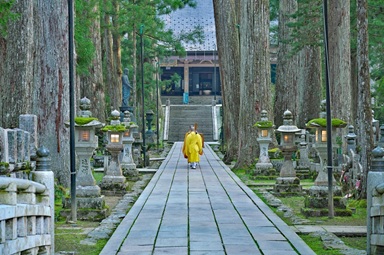  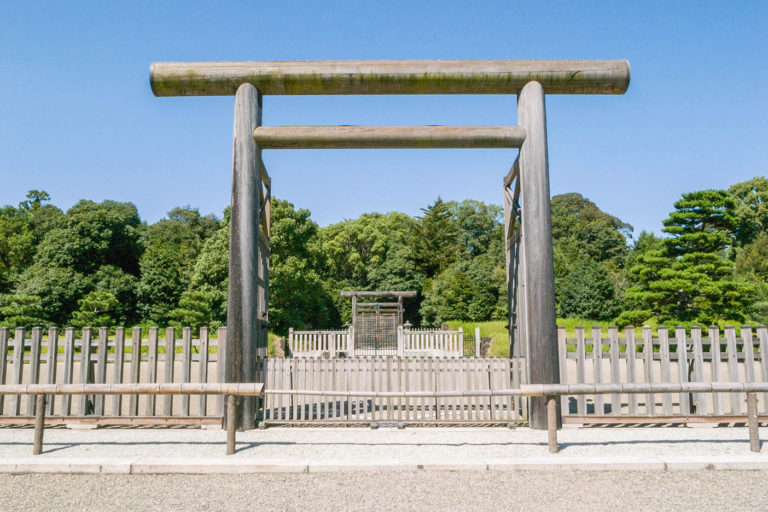
|
From the hotel we head to Mt. Koya. We ride a sightseeing train “Tenku" from Hashimoto Station to Gokurakubashi station, then transfer to a cable car to get to Mt. Koya station. We visit Okunoin, it is the site of the mausoleum of Kobo Daishi the founder of Shingon Buddhism and one of the most revered person in the religious history of Japan. Instead of having died, Kobo Daishi is believed to rest in eternal meditation as he awaits Miroku Nyorai (the Buddha of the Future), and provides relief to those who ask for salvation in the meantime. Okunoin is one of the most sacred places in Japan and a popular pilgrimage spot. After lunch we go to Kashihara, is said to be the birthplace of the nation of Japan. We visit the Unebiyama Northeast Mausoleum, is the first emperor (Jinmu) of Japan rest in the tomb of Emperor Jinmu. Emperor Jimmu is the father of the nation of Japan. It would be a good idea to pay your respects at the Unebiyama Northeast Mausoleum and join hands with the emperor. Then we go to the hotel. | × |
× |
× |
| 14 (Tue.) |
KASHIHARA
MERCURE HOTEL♨ 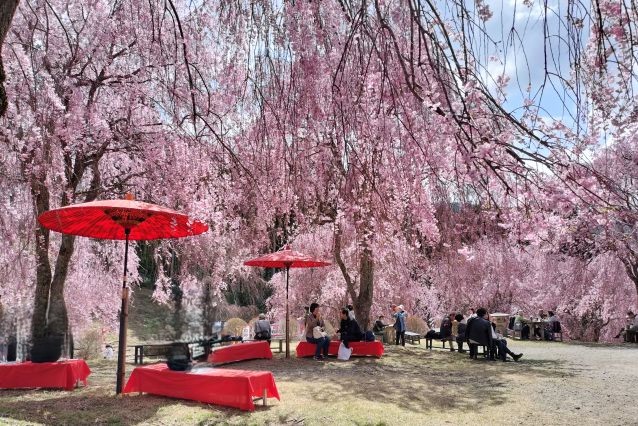
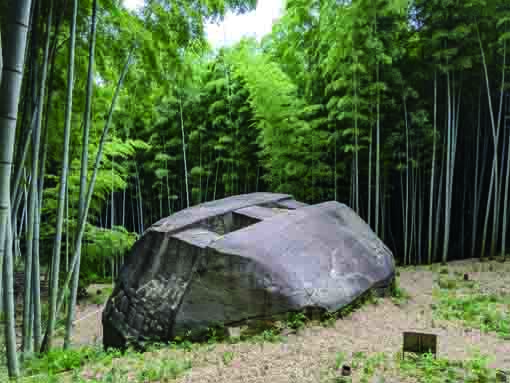
|
From the hotel we go to Takami no Sato. There are many famous spots for cherry blossoms all over Japan, but 1000 weeping cherry blossoms are very rare. Then we go to Asuka Village, where the mysteries of ancient history remain. We visit the Takamatsuzuka Tomb, is still not known for whom the tomb was built, but it must have been someone of considerable importance. We can view the tomb only from outside, as great pains are being taken to preserve the paintings within. Nonetheless, the experience of entering the tomb can be closely simulated in the Takamatsuzuka Mural Hall, where recreations of the tomb and its paintings are displayed, as well as some of the actual articles found at the site. After lunch we go to see the mysterious stone structures Ishibutai and Masuda Iwafune in Asuka Village. Then we go back to the same hotel. |
× |
× |
× |
| 15 (Wed.) |
KUSHIMOTO
MERCURE HOTEL♨  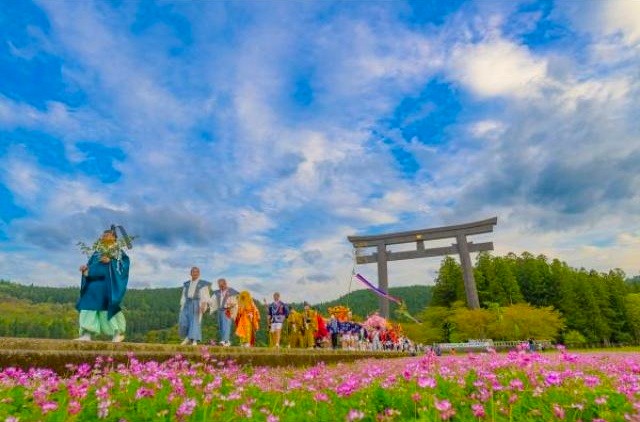
|
From the hotel we go to the famous "Tanise Suspension Bridge" in Totsukawa village, the largest village in Japan. The suspension bridge is about 297 meters long and 54 meters above the river, and it is much higher than it looks in the numbers. After lunch we go to Kumano Hongu Taisha, is the center of the Kumano Sanzan (Hongu, Hayatama, and Nachi Taisha), and is the head shrine of the more than 4,700 Kumano shrines across the country. The 15th is also the day of the biggest festival. Young people carrying portable shrines and artificial flowers, Shinto priests, Shugendo monks who train in the fields and mountains, and shrine maidens perform kagura and rice planting. Then we go to the hotel. |
× |
× |
× |
| 16 (Thu.) |
ISE-SHIMA
MERCURE HOTEL♨  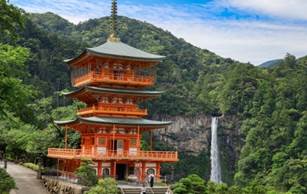 |
From the hotel we go to see Hashikui-Iwa, pointed rocks formed naturally in a line halfway from the coastline toward the other side island. There is a legend between Kobo Daishi and the demons related to this Hashikui-Iwa. Next go to Kumano Kodo Daimonzaka, the mossy stone steps surrounded by cedar grove from the entrance of Daimonzaka has a perfect atmosphere of Kumano Kodo. Then we visit Nachi Taisha and to see Nachi Waterfall, the highest sacred waterfall in Japan. Lunch is your choice at the Katsuura Fish Market (own pay). After lunch we visit the sea turtle aquarium in Kiho Town, where sea turtles come to lay eggs. Then we go to the hotel. |
× |
|
× |
| 17 (Fri.) |
ENA ROUTE INN 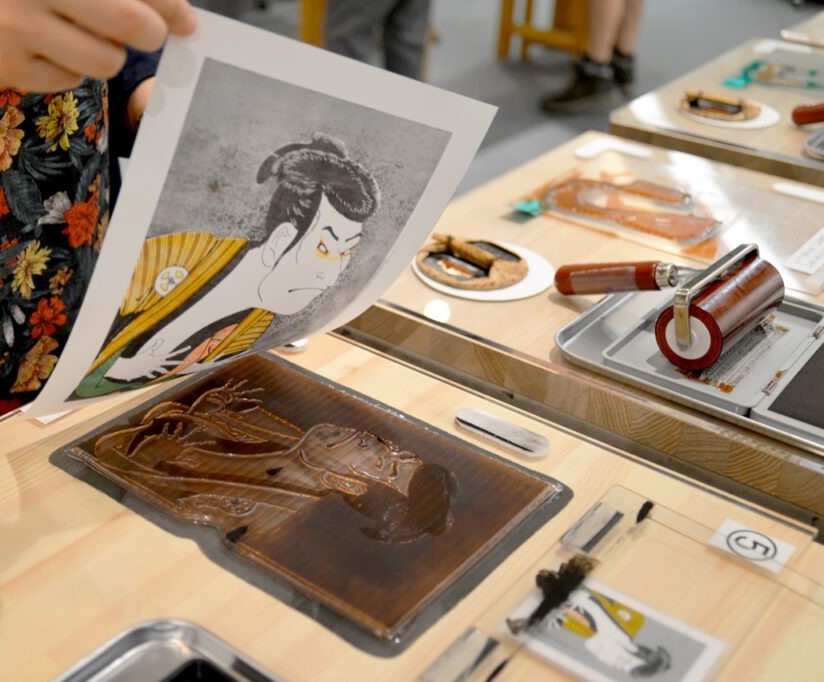
|
From the hotel we visit Ise Jingu, an important shrine related to the Japan emperor’s family. On the outside of the shrine, we can enjoy shopping at Okage-yokocho, there is a traditional old Japan atmosphere shopping area lined with shops and eating places. Let's eat Ise's famous Akafuku Mochi. After lunch we visit the Nakasendo Hiroshige Museum of Art. The museum houses around 500 woodblock prints and is especially known for the “Kisokaido Rokujukyu-tsugi Nouchi” collection by Hiroshige Utagawa. After viewing the exhibits, learn about the process in which ukiyo-e are created and try your hand at making some yourself. |
× |
× |
× |
| 18 (Sat.) |
SHIOJIRI
ROUTE INN .jpg) 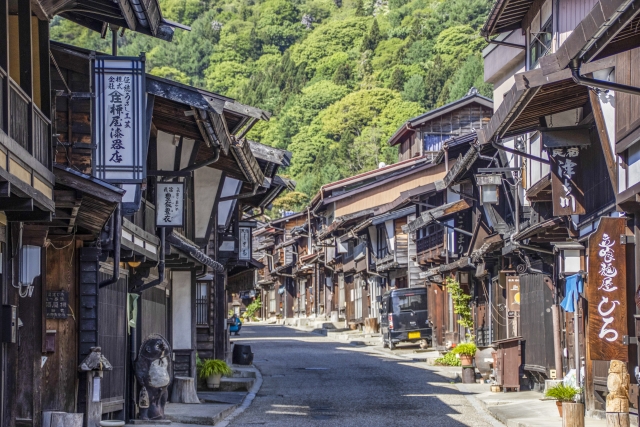
|
From the hotel we go to Achi village to see Hanamomo Blossoms. Enjoy the three-colored Hanamomo Blossoms, which has three-colored flowers blooming from one branch. After lunch we go to the Nakasendo Trail. It is the old route that connected Tokyo and Kyoto during the Edo (1603 ~ 1868) period. We visit the Magome-Juku, a famous post town on the Nakasendo road. Magome-Juku is still a living, functioning post town. Each house is a real residence, conveying the look and feel of the area and atmosphere of the time, helping to evoke its lively 400-year history. Next try to walk from Magome-Juku to Tsumago-Juku, known as the "Samurai Road." The 5.6-mile (9.1 km) route takes about 3 hours, but we will walk downhill from Magome Pass to Tsumago-Juku about 2 miles, 1 hour walk. * Those who don't want to walk can drive to their destination, Tsumago-Juku. Then we go to the hotel. |
× |
× |
× |
| 19 (Sun.) |
TAKAYAMA
HOTEL ALPINA♨ 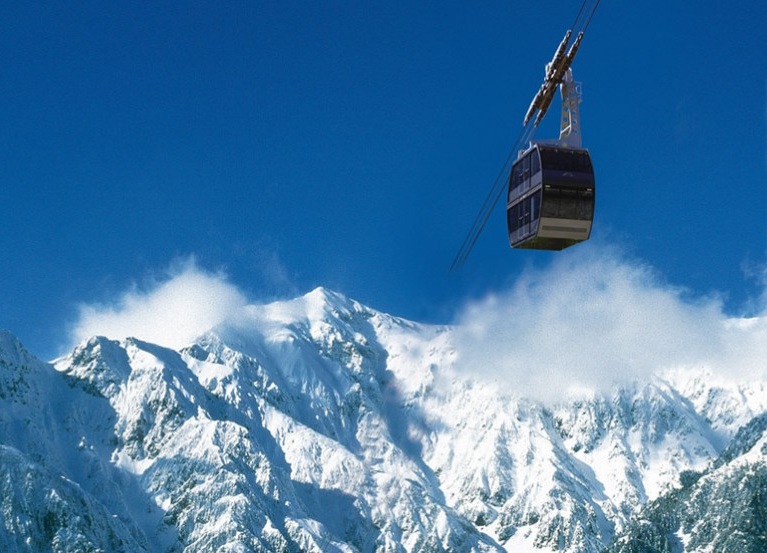 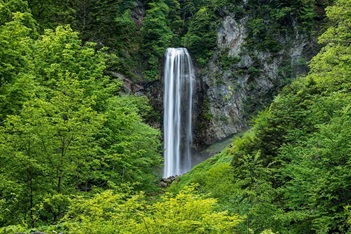 
|
From the hotel we go to the Shinhotaka Ropeway, offers spectacular views that have been awarded two stars in the Michelin Green Guide Japan. Ride Japan's only double-decker gondola to a spectacular view point where we can enjoy a grand panorama from the observation deck at an altitude of 7073 feet. Everyone from children to the elderly can easily enjoy the view above the clouds. After lunch we go to see the magnificent shape of the Hirayu Grand Waterfall, which is one of three major falls in the Hida region. you will find sedimentary rocks exposed that were deposited during the Triassic and Jurassic eras on an ancient seabed in a geological zone called the Mino Belt. The rocks evoke a sense of romanticism for ancient times and a sense of wonder for the greatness of nature. Then we go to the hotel. If you would like to go after dinner, we will take you on a train to the Okoshi Daiko at the Furukawa Festival. The Okoshi Daiko is half-naked men carry around a frame-mounted turret on which a large drum is perched, bumping into each other and making the rounds of the town. |
× |
× |
× |
| 20 (Mon.) |
TAKAYAMA
HOTEL ALPINA♨ 
|
From the hotel we go to Hida Furukawa Town to see Furukawa Festival. The Yatai parade is highlight of the festival. Nine Yatai floats are ornately decorated with elaborate carvings, and show off their unique craftsmanship. the Yatai Parade is peaceful and beautiful. The festival is composed of “motion” and “stillness,” a concept that has been passed down for generations and takes on important role in signaling the arrival of spring. After lunch we go to Shirakawago, a small traditional village famous for a building style known as gassho-zukuri. It is one of UNESCO'S World Heritage Sites. Then we go back to the same hotel. |
× |
× |
× |
| 21 (Tue.) |
INUYAMA
HOTEL INDIGO♨   |
From the hotel we go to Takayama Morning Market, a daily market near the river with stalls selling vegetables, fruits & other local farm products. Then we look around and walk the Sannomachi Street, a preserved old town called “Little Kyoto” of Japan’s Gifu region. After lunch we go to Gujo-Hachiman Town, famous city for their dance and food sample making. Visit Hakurankan Museum and watch the Gujo Odori demonstration that they have every day. Staffs in yukata introduce simply the contents and the secret stories of about 10 types of dances. Next visit & look at a Food replica workshop and also experience making a smartphone stand. Then we go to the hotel. | × |
× |
× |
| 22 (Wed.) |

|
From the hotel we visit the Inuyama Castle, was initially constructed in 1537, and its donjon is one of Japan's oldest extant. It is one of only twelve original castles left in Japan. After lunch we visit Noda Wisteria Festival. This Noda Wisteria was planted over 40 years ago by the late Mr. Kajimoto, dubbed the Heisei Flower Man, and has grown into a magnificent specimen with over 40,000 flower clusters. Then we go to Aeon Mall for lunch and shopping before going to Kansai airport for your departure flight to Honolulu. |
× |
× |
|
HOTELS ARE SUBJECT TO CHANGE TO SAME OR BETTER CLASS
DUE TO THE WEATHER SITUATION THE TOUR COURSE MAY CHANGE
Back
Hand-Made Tours
Direct calls to Evelyn: (808) 520-0018
E-mail:handmadetourshawaii@gmail.com